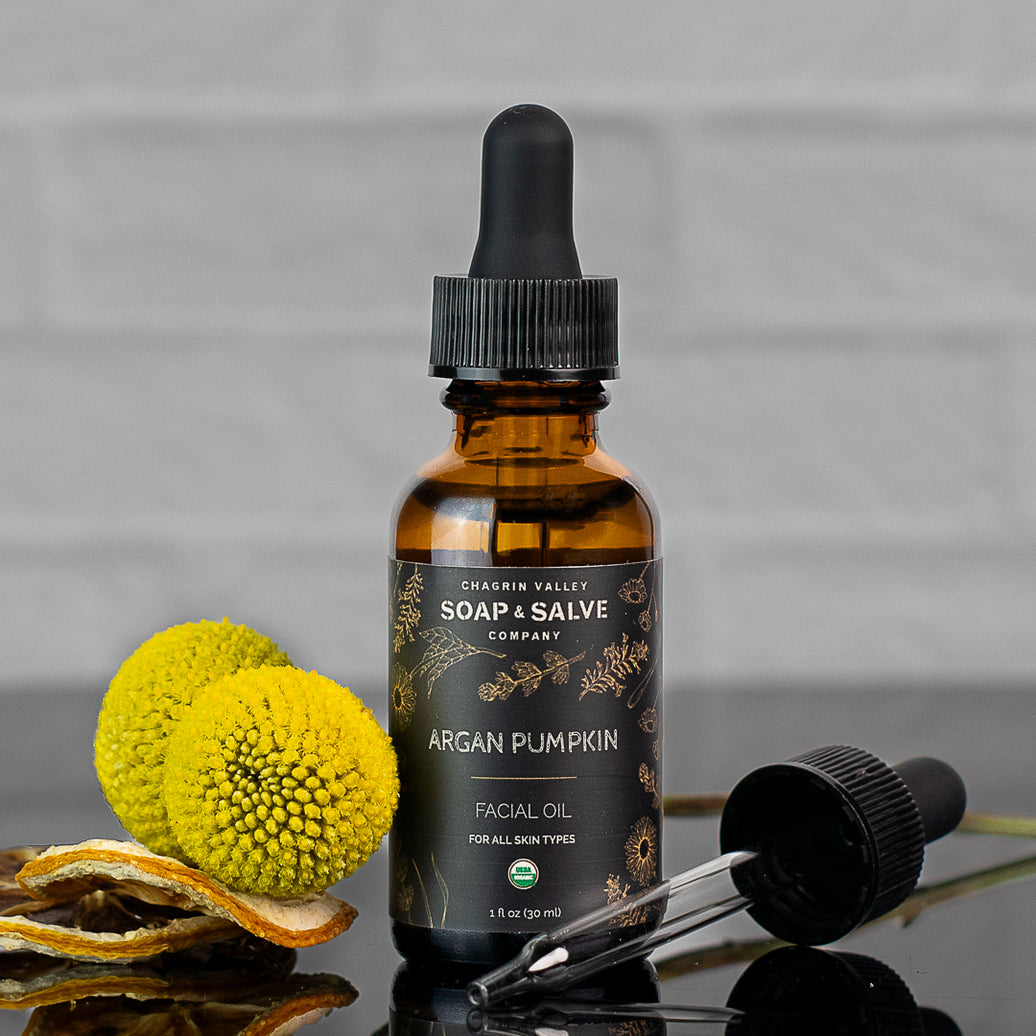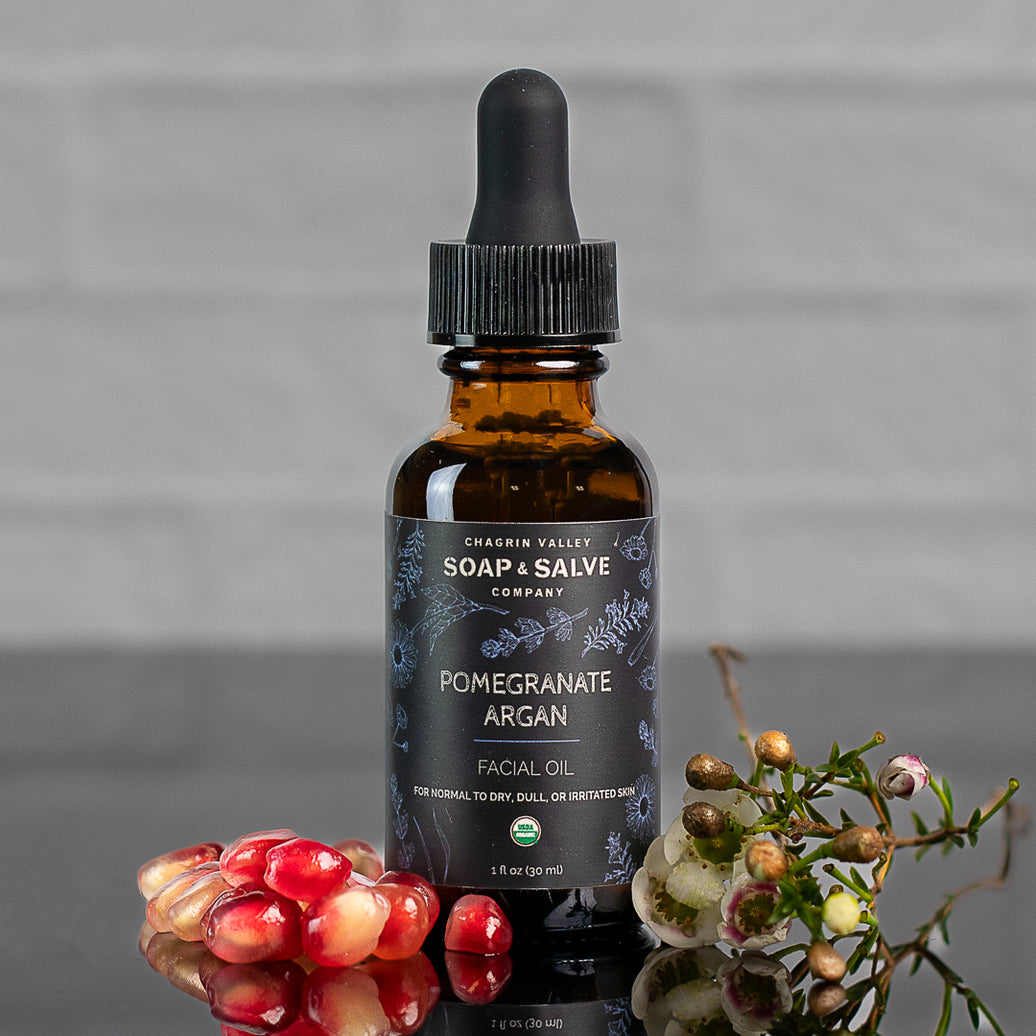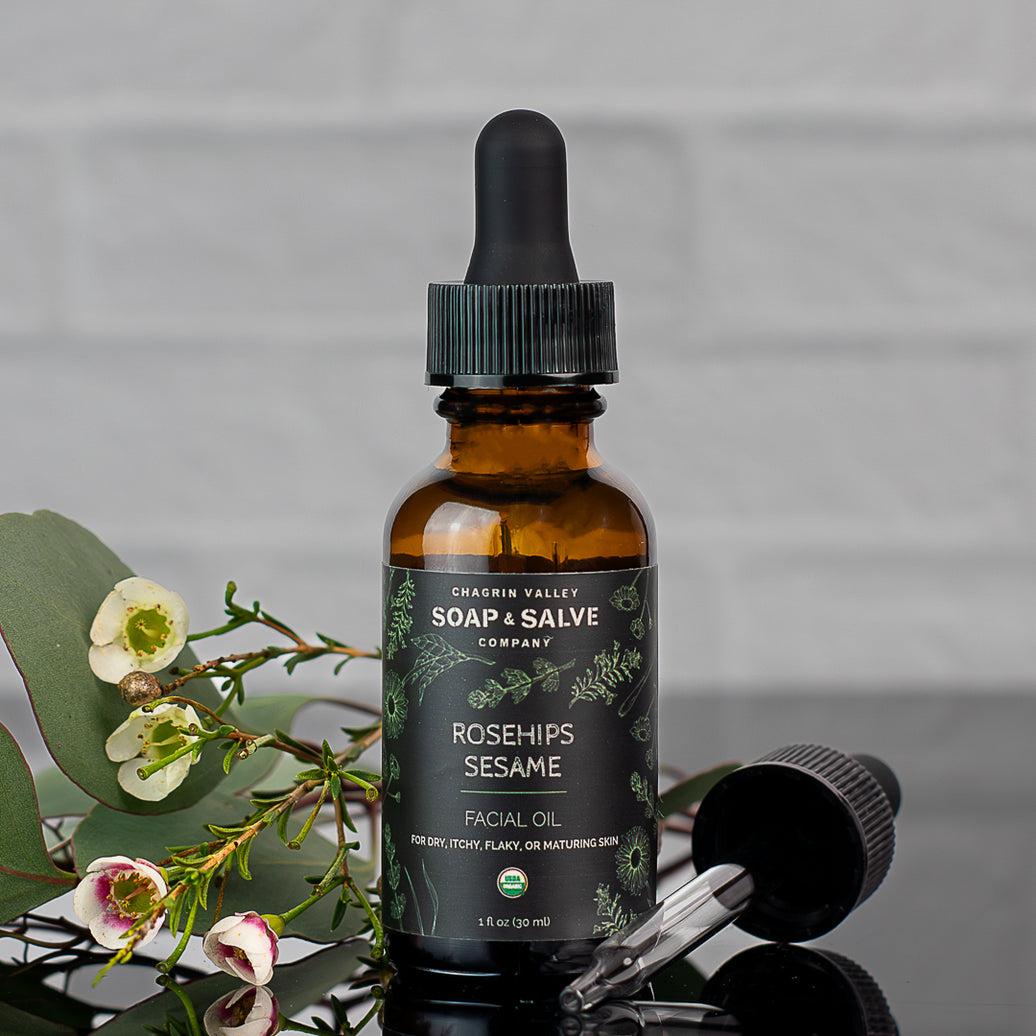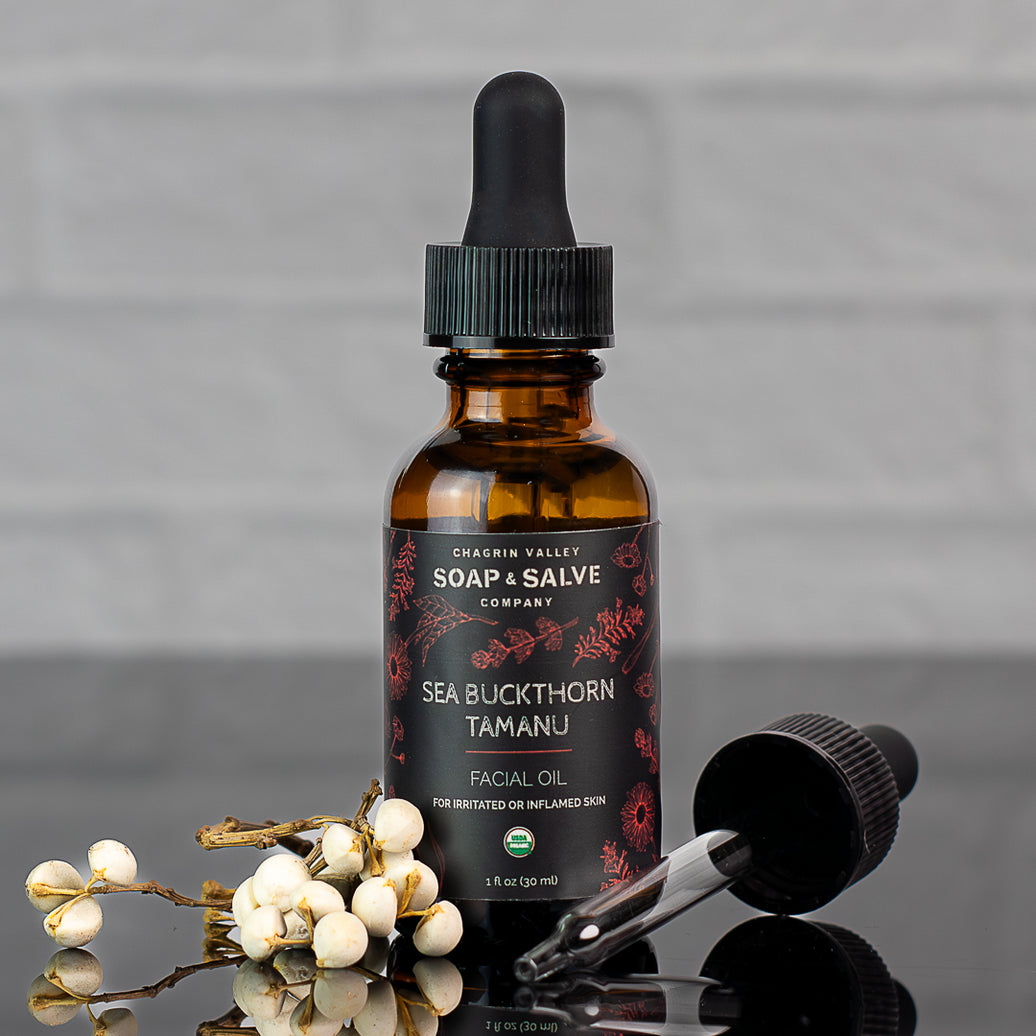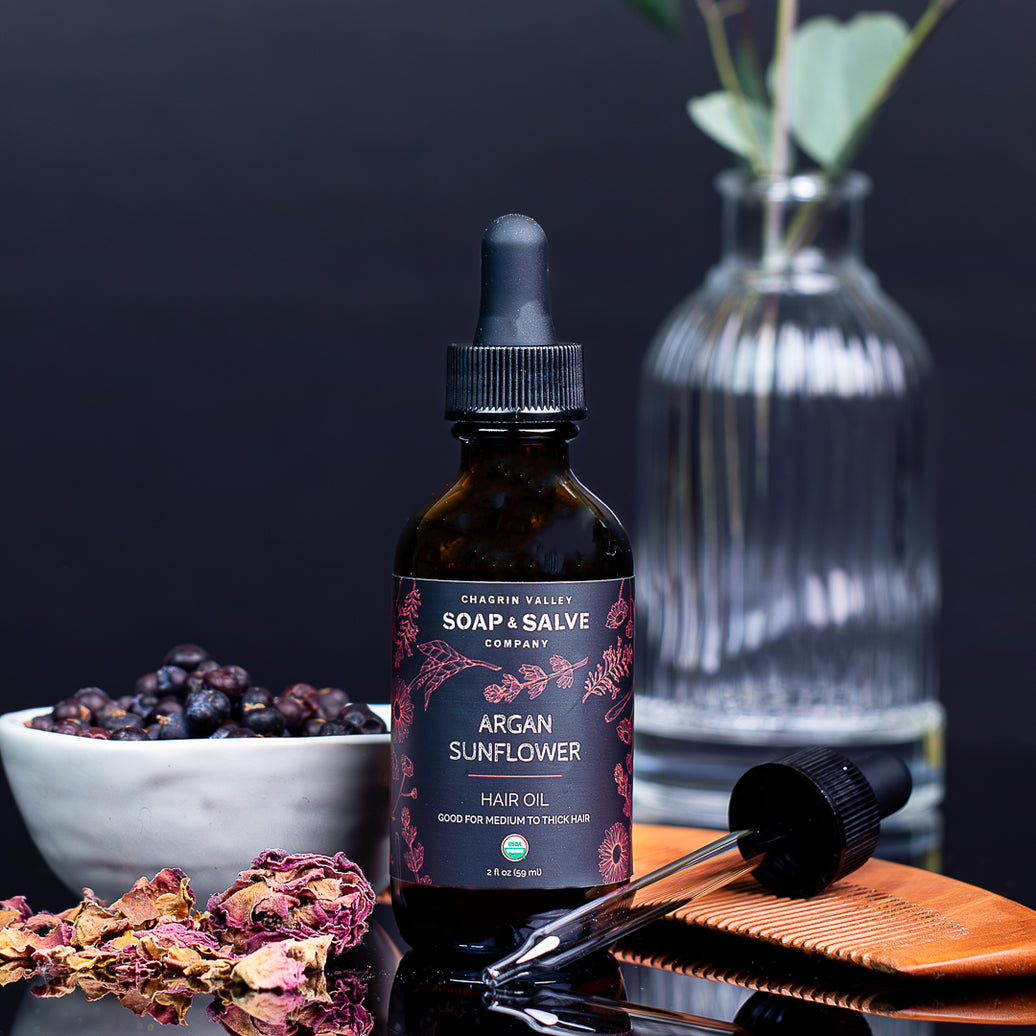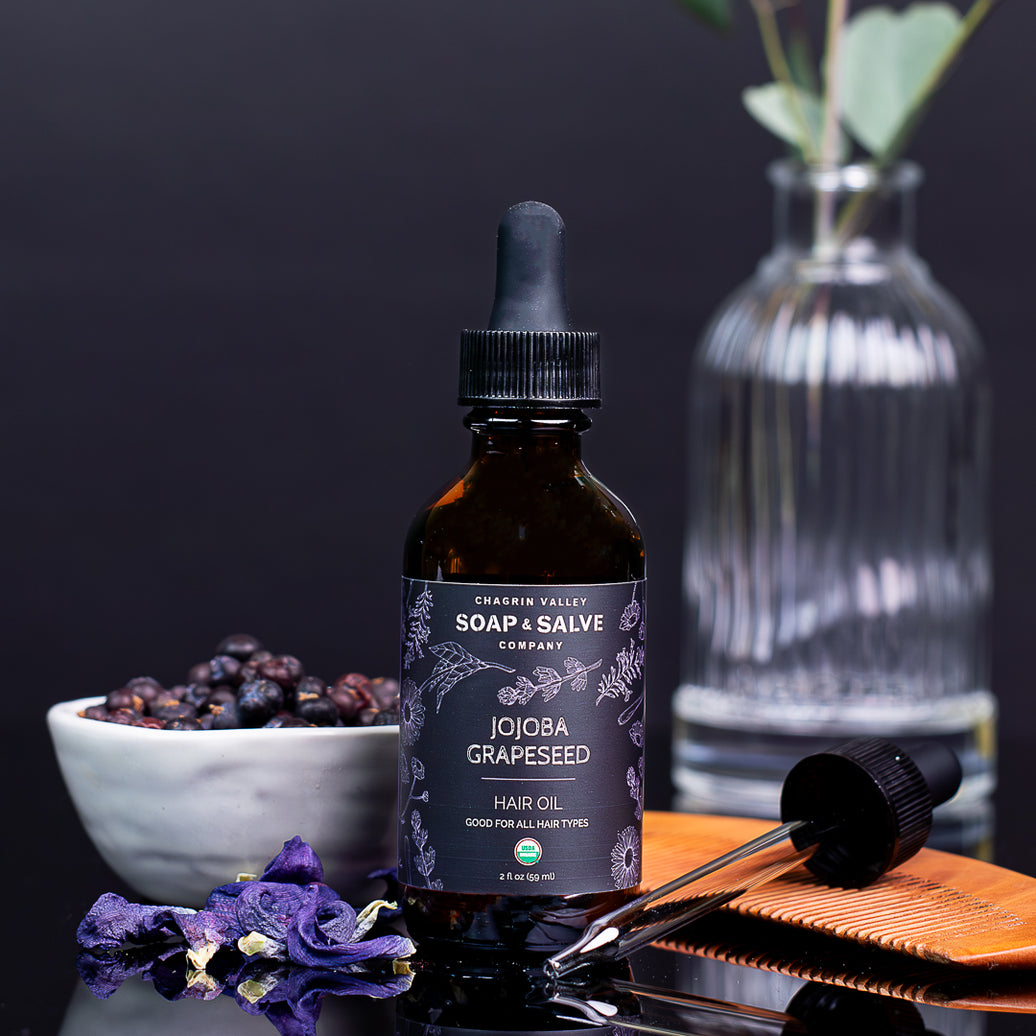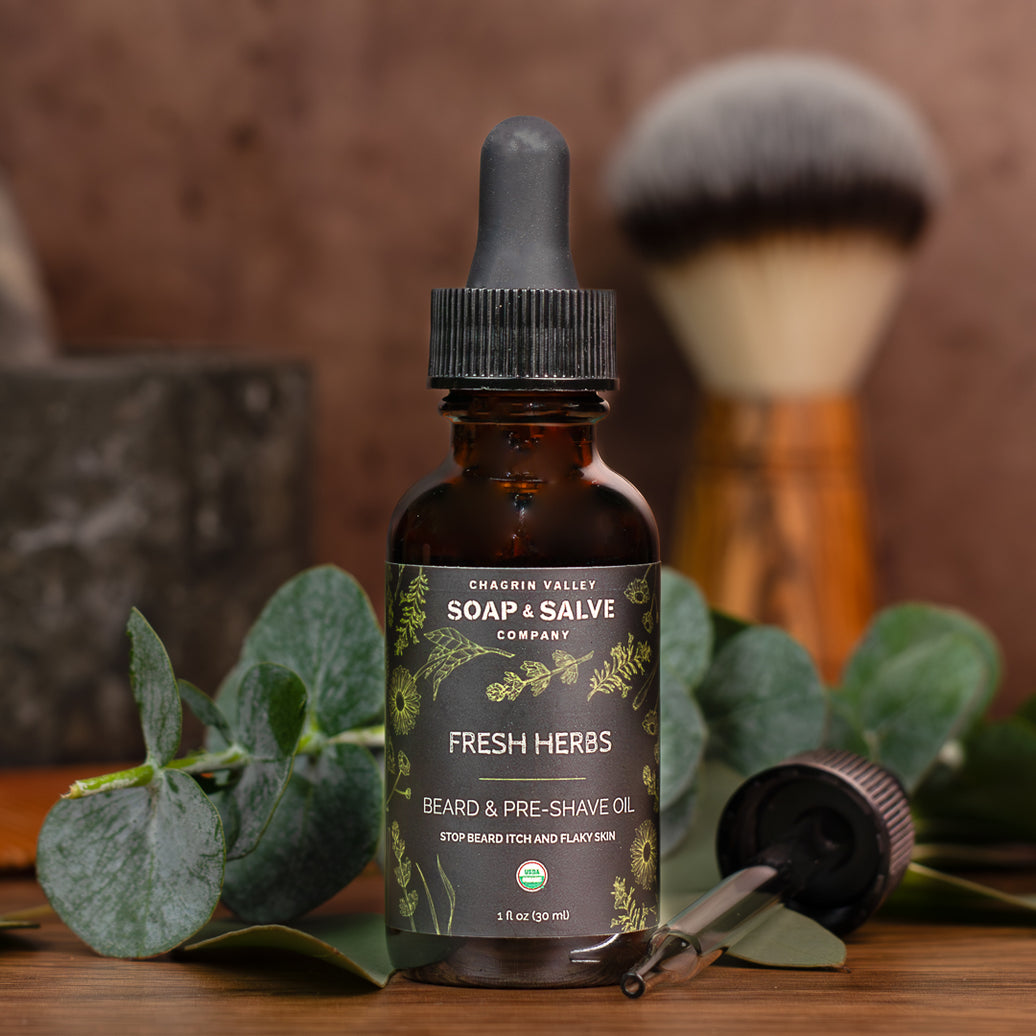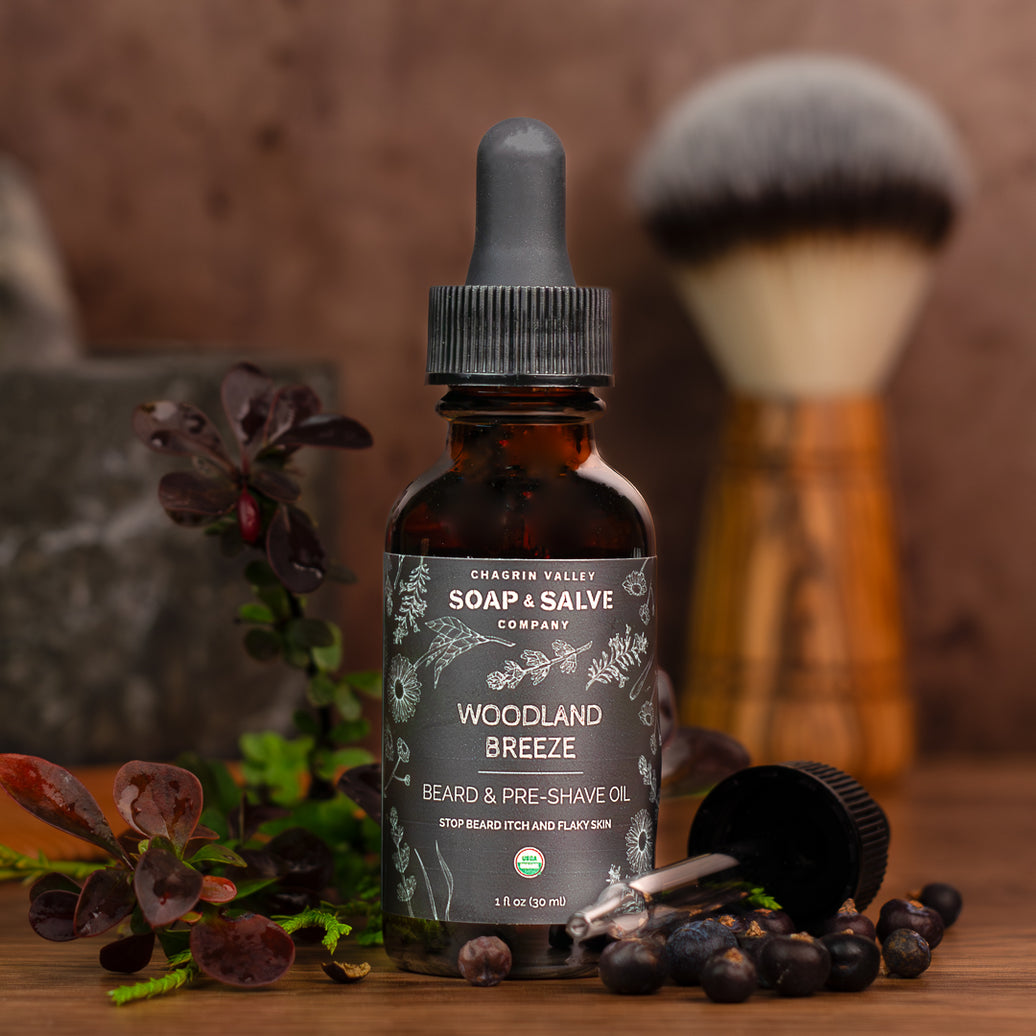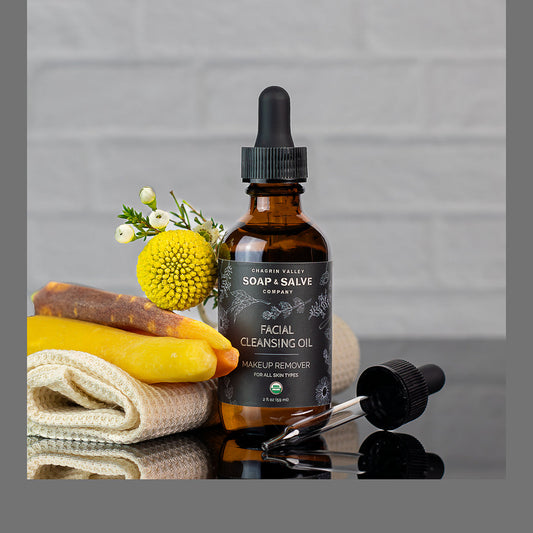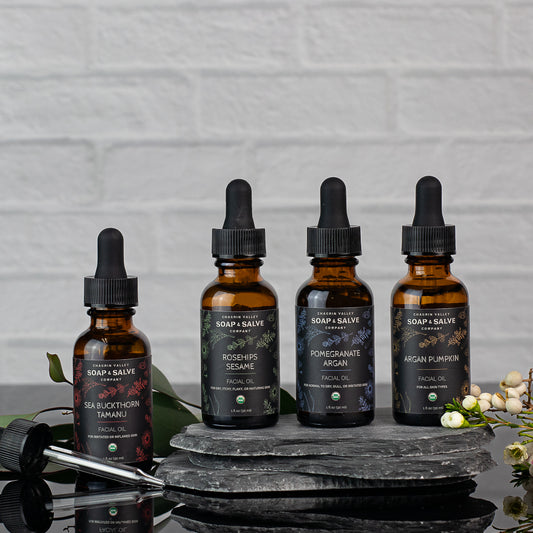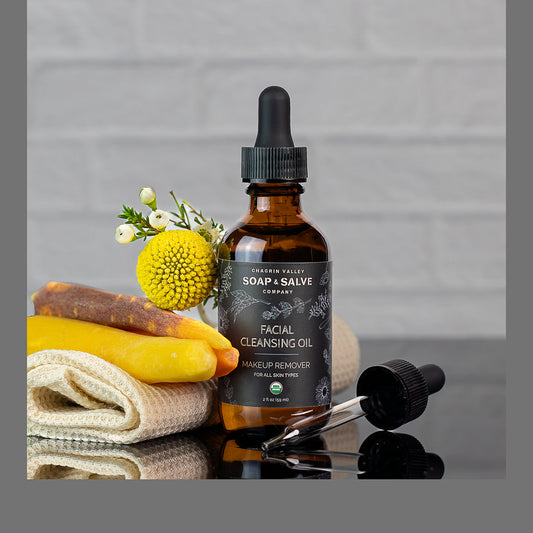Seed Oils in Skin Care: Separating Fact from Fiction for Healthy, Radiant Skin
Recently, we have received inquiries from customers concerned about the safety of seed oils in skin care. Questions like, "I've heard that using seed oils in my food can be bad for my health, but is it safe to use them on my skin?"
To address this concern, let's first delve briefly into the ongoing debate surrounding seed oils.
The Seed Oil Controversy
 Seed oils have sparked intense debate on social media, with some hailing them as toxic and others defending their health benefits.
Seed oils have sparked intense debate on social media, with some hailing them as toxic and others defending their health benefits.
But what are seed oils, and why the controversy?
Seed oils are vegetable oils derived from the seeds of plants, rather than their fruits.
The most commonly discussed seed oils, often referred to as the "hateful eight," are canola, corn, cottonseed, grapeseed, rice bran, safflower, soybean, and sunflower oils.
Health concerns surrounding consuming seed oils center around three things:
- High omega-6 to omega-3 ratio: Seed oils are particularly high in linoleic acid, an omega-6 fatty acid, which can promote inflammation when consumed in large quantities relative to omega-3s.
- Oxidative stress: Some argue that seed oils are prone to oxidation when heated, creating harmful free radicals that can damage cells and contribute to chronic disease.
- Processing methods: The industrial extraction process used to produce many seed oils may involve chemical solvents like hexane, raising concerns about potential residual contamination. The extraction method can impact the quality of the oil due to factors like oxidation or degradation during the process.
As with so many "science" topics, the actual research is quite conflicting and inconclusive. Some studies suggest that negative health effects are associated with poor-quality, heavily processed oils or excessive seed oil consumption. Others have demonstrated potential negative effects in lab settings, but these have not translated to significant health risks in human studies.
The majority of scientific evidence seems to emphasize the importance of using quality oils that are eaten in moderation as part of a balanced diet, rather than categorically labeling all seed oils as "bad."
While the dietary debate surrounding seed oils is complex, our focus here is on their use in skincare. Are seed oils safe for our skin? With some companies actively promoting seed oil-free skincare products, it is essential to examine the evidence and separate fact from fiction.
Eating Seed Oils vs. Topical Application: What's the Difference?
The health effects of consuming seed oils are still debated. However, when applied topically, the story changes dramatically. The key difference lies in how the body processes seed oils.
When ingested, the oil travels through your digestive system, where the fat molecules are broken down into smaller components called fatty acids, which are then absorbed into your bloodstream.

In contrast, when high-quality seed oils are applied topically to the skin or scalp, most molecules remain on the surface, forming a protective layer that helps retain moisture.
Studies have shown that while some smaller molecules, such as free fatty acids, can penetrate the outermost layer of the skin (the stratum corneum), deeper penetration beyond this layer is minimal. Thus, the fats do not enter into the circulation.
Some sources may claim that free fatty acids (FFAs), like Omega 6, can penetrate the skin barrier. However, a high free fatty acid content usually indicates a poor quality oil. As I will discuss later, an "unrefined" oil is made by crushing seeds using no external heat or chemical treatment. However, when seed oils are produced using poor-quality seeds or very high heat extraction the fat in the oil may break down to form FFAs.
A high-quality seed oil will have a low level of free fatty fatty acids, minimizing the amount of fatty acids that can penetrate the skin barrier and potentially reach the bloodstream.
This distinction is crucial in understanding the benefits and safety of using seed oils in topical applications.
Seed Oils in Skin Care: Understanding the Differences in Seed Oils
Not all seed oils are created equal and consumers often struggle to understand these differences, leading to misconceptions about the safety and efficacy of seed oils in skincare.
The quality of a seed oil depends on various factors including:
- The farming practices used to grow the seeds
- The extraction method
- The level of processing
Let's break down the differences between organic and conventional seed oils, as well as the various extraction methods.
Farming Practices

The majority of seed oils on store shelves come from large-scale, monoculture industrial farming operations. Monoculture farming refers to the practice in which a single crop is grown in a field over a large area.
This approach is used to maximize efficiency and yield. This type of farming can lead to soil erosion, nutrient depletion, and reduced soil fertility which results in lower-quality crops and oils.
These oils are usually not organic and many are derived from genetically modified (GMO) crops.
Organic vs. Conventional Seed Oils
Organic Seed Oils
Organic seed oils come from plants grown without harmful pesticides, herbicides, or fertilizers.
Certified organic oils cannot be extracted using hexane. The USDA prohibits the use of solvents like hexane to extract oils from organic plants and fruits. This results in a cleaner oil that is less likely to contain harmful additives.
If a certified organic oil needs to be refined to enhance clarity and stability, natural processing aids like diatomaceous earth (earthen bleaching clay) for removing color and steam heat for deodorizing are used, all within USDA Organic guidelines. Conventional refining uses chemicals in the refining process.
Organic farming practices, which are better for the environment, focus on improving soil quality, which can positively impact the nutrient content of the plant and the oil extracted from it. Additionally, organic seeds are non-GMO, ensuring that the oil is free from genetically modified organisms. Certification by a recognized organization such as the USDA guarantees that these oils meet stringent organic standards.
Conventional Seed Oils
Conventional seed oils may be derived from GMO seeds and harvested from plants grown using strong pesticides, herbicides, and fertilizers. Conventional refining often uses synthetic chemicals in the extraction and refining processes.
Why don't all skin care companies use organic oils? The answer lies in the challenges of organic farming. Organic crops are more susceptible to damage from pests and climate fluctuations, which can impact yields and drive up costs. As a result, organic seed oils are often more expensive than their conventionally grown counterparts.
Seed Oil Extraction Methods Explained
When exploring ingredients in skincare products, you may come across terms like cold-pressed, expeller-pressed, virgin, or unrefined. These words refer to methods of extracting oil from seeds with minimal processing, meaning the oil is extracted using some type of mechanical pressing or pressure.
There are two primary methods used to extract seed oils: mechanical pressing (cold-pressed and expeller pressed) and solvent extracted.
Mechanical Extraction
Cold-pressing: Cold pressed oils are made without heat or chemicals, the process is solely mechanical using pressing tools to crush raw seeds. The oil is then separated and filtered without the use of heat or chemical additives. Cold-processed oils cannot exceed 120°F during the extraction process.
Cold-pressing is the best way to preserve the nutritional profile of the plant.
 These unrefined oils are the most desired to use in skincare. The minimal processing ensures a high quality, nutrient-rich, closer to nature oil that is rich in antioxidants, vitamins, and essential fatty acids that can help nourish skin, reduce inflammation, and repair the skin barrier.
These unrefined oils are the most desired to use in skincare. The minimal processing ensures a high quality, nutrient-rich, closer to nature oil that is rich in antioxidants, vitamins, and essential fatty acids that can help nourish skin, reduce inflammation, and repair the skin barrier.
Since no external heat is added and little heat is produced, cold-pressed oil extraction allows for the natural enzymes to stay intact and maintains a higher level of nutrients.
Since cold pressing is the least efficient method, these oils are more expensive to source.
Expeller Pressed: Some seed oils may not be suitable for cold pressing, but can still be safely and effectively extracted using expeller pressing. This type of pressing uses a screw press to physically squeeze oil out of seeds and no chemicals are added.
While expeller pressing does not add external heat to the process, the high pressure and friction involved in squeezing the oil out of seeds can generate internal heat up to above 140°F. As a result this process cannot be called "cold-pressed."
Due to the heat generated this method may not preserve as many of the delicate nutrients as cold-pressing.
Solvent Extraction Process
Many seed oils, especially those used in the food industry and as cooking oils, are extracted using solvents to ensure a higher oil yield, make them more shelf-stable, and create a neutral-tasting oil with a higher smoke point.
Typically the seeds are ground into a fine paste. This paste is then washed with the solvent to release the fat. The oil is then heated to 212° F to burn off the solvent. The last stage of the oil extraction process is usually to refine, bleach, and deodorize the oil to remove color and neutralize scent or taste. This can be done using chemical or physical bleaching agents, or even a combination of both.
According to an article published in 2022 in the journal Foods, hexane is the most comment solvent used in the food industry for extraction. "As it is classified as a "processing aid", it does not have to be declared on the label under current legislation. Therefore, although traces of hexane may be found in final products, especially in processed products, its presence is not known to consumers."
Solvent extraction removes about 97-99% of the oils from the nuts/seeds, making it the most efficient and cost effective method of extraction.
Despite all the chemical processing, these oil can still be described as “pure and natural.”
While the the methods of extraction and refining do not change the fatty acid profile of an oil, they remove the plant-specific active compounds that give individual oils their nutritional values and you are often left with few beneficial properties for the skin. Refined oils are usually less expensive and have a longer shelf life compared to unrefined oils.
Keep in mind, the above distinction is not only seed for oils, but for other carrier oils used on your skin.
Why don't all skin care companies use cold-pressed or expeller-pressed oils? While the mechanically extracted, less refined oils offer lots of benefits, they are generally more expensive. Chemical solvents allow for higher yields at lower costs.
Also, since unrefined oils have more active compounds, they have a stronger scent profile and deeper color that often varies from crop to crop. The aroma of any essential oils or added fragrance can be changed by the natural scent of an unrefined oil. This can result in a finished product that looks and smells different from batch to batch. You can imagine that large cosmetic companies do not want to use oils that will interfere with the consistent look, scent, and feel of their final product.
I want to mention that there is a more natural method of solvent extraction that can be used to obtain oils from botanical material. It is called Supercritical Carbon Dioxide (CO2) Extraction and uses carbon dioxide as the solvent. Although it is gaining popularity, oils produced using CO2 extraction are quite expensive. To read more about this method read our blog about essential oil extraction.
Beyond the Label: A Commitment to Transparency
Navigating the skincare market can be overwhelming, with numerous products making claims about safety and efficacy. Misinformation and lack of transparency in the beauty industry make informed decision-making challenging.
Have you ever scrutinized the ingredient list on your skincare product, only to be left wondering what's really in it? Unclear labeling is a pervasive issue in the beauty industry.
When choosing a skin care brand, especially for topical products that remain on the skin like face oils or massage oils, look beyond the label.

If the product or the seed oil is USDA Certified Organic you can be assured that:
- The oils are grown using organic farming methods
- They contain no GMOs
- They are not solvent extracted
- If refined, only natural processing aids are used, adhering to strict USDA Organic guidelines
But what if the product or the oil is not certified organic?
Are there ingredient details available on the company website? Does the information reveal how the oil is extracted or refined?
Why does it matter? Remember that the quality of a seed oil is significantly impacted by factors like farming methods, extraction processes, and refining techniques.
For example, simply seeing the words "rosehip oil" in the ingredient list does not provide any information about the purity or quality of the oil.
How can you be certain that the product or oil you are purchasing is not made with nutrient-void oil grown with pesticides, genetically engineered, solvent-extracted, or refined with chemical additives? You can't!
We believe you deserve transparency and accurate information about your skincare products.
By prioritizing transparency, companies build trust with customers and ensure they can make informed choices about their skin care.
Our commitment is to provide the highest quality, minimally processed ingredients rich in nourishing nutrients to ensure your skin receives the best care possible.
How We Use Seed Oils at Chagrin Valley
At Chagrin Valley, we are passionate about unlocking the full potential of nature's finest ingredients. We carefully hand-select each seed oil for its distinct character, nutrient profile, antioxidants, and natural compounds that work together to nourish and protect your skin.
Our meticulous research ensures every ingredient harmonizes to create a synergistic formula. Our organic seed oils are bursting with nourishing nutrients and play a starring role in many products, including luxurious face oils, nourishing hair oils, and conditioning beard oils. They also provide supporting benefits in numerous other products.
By harnessing the power of these extraordinary oils, we create products that promote healthy, radiant skin and help you feel confident, beautiful, and connected to nature.
Our commitment to quality and transparency means you do not have to worry about farming practices or processing methods. All our seed oils are USDA Certified Organic, guaranteeing adherence to rigorous standards.
Explore our products and discover the transformative power of our seed oils for yourself.
If you have questions, our comprehensive ingredient database is available for searching. Also, every product page contains a list of each ingredient (highlighted in green), with links to detailed information for your convenience.
Seed Oils for Skin Care: The Conclusion
Bottom line, there is no need to avoid seed oils in your body or hair care products as long as the products are made with quality seed oils.
Topical application of high-quality, organic, mechanically pressed seed oils can provide a range of benefits for the skin and can be invaluable for targeted skin concerns.
There are studies that show the topical application of seed oils can help speed wound-healing, repair the skin barrier, and may reduce oxidative stress that causes premature aging.

A study published the Journal of Molecular Science, titled “Anti-Inflammatory and Skin Barrier Repair Effects of Topical Application of Some Plant Oils,” reviews the available data on biological influences of topical skin applications of some plant oils including seed oils.
The article states that when applied topically, constituents of plant oils, including seed oils, "may act synergistically by several mechanisms" promoting skin barrier homeostasis, promoting wound healing, as well as exhibiting anti-inflammatory and anti-microbial properties.
These quality oils are rich in essential fatty acids, vitamins, and antioxidants and offer a multitude of benefits for skin care. Some of the key advantages include:
- Nourishing hydration: Seed oils create a protective barrier that seals in moisture, leaving skin feeling soft, supple, and rejuvenated.
- Skin balance: Seed oils help regulate skin's natural moisture levels, balancing dryness and oiliness for a healthier complexion.
- Soothing relief: The anti-inflammatory properties of seed oils can help calm irritated skin, reducing redness and discomfort associated with conditions like acne, eczema, and psoriasis.
- Enhanced wound recovery: Seed oils provide essential nutrients that support the wound-healing process.
- Improved elasticity: By nourishing and protecting skin, seed oils can help restore its natural elasticity and firmness.
- Environmental protection: Rich in antioxidants, seed oils can help shield skin from harmful environmental stressors.
I hope that by understanding how to look for good quality seed oils in your skin care products, you will be empowered to make informed choices. We invite you to explore our world of topical skin care products, carefully crafted with high-quality seed oils, and discover the transformative difference they can make in your skin and hair care routine.
Things to Remember
All seed oils are not created equal! A high-quality, mechanically-pressed seed oil will have a low level of free fatty fatty acids, minimizing the amount of fatty acids that can penetrate the skin barrier and potentially reach the bloodstream.
Our seed oils are mechanically extracted using cold-pressing or expeller pressing.
- Mechanical pressing is the best way to preserve the nutritional profile of the plant.
- Mechanical pressing does not use solvents or other chemicals. No need to worry about solvent trace contaminants like hexane.
- Mechanical pressing means no external heat is used.
- High heat extraction causes free fatty acid (FFA) formation. These FFAs can be absorbed deep into the skin and potentially enter the bloodstream.
- High heat extraction can impact the quality of the oil due to factors like oxidation or degradation during the process.
Our seed oils are USDA organic which means:
- Organic farming methods
- Higher quality seed oils
- No GMOs
- No solvent extraction
- Only natural processing aids used if refining is necessary
Everyone’s skin is unique, and individual reactions to ingredients can vary widely. What works for one person might not have the same effect on another. We always recommend a patch test if you have sensitive skin or are trying a new product for the first time.
